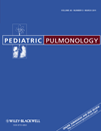Ventilatory response to added dead space and position in preterm infants at high risk age for SIDS
Abstract
Objective
The vulnerability of prematurely born infants to sudden infant death syndrome (SIDS) in the prone position might be explained by a reduced ability to respond to a stress, such as hypercarbia, in that position; our objective, therefore, was to further explore the influence of position on the response to a stress.
Working Hypothesis
The ability of prematurely born infants to respond to added dead space in the prone compared to the supine position would be impaired at the high risk age for SIDS.
Patients
Twenty infants, median gestational age of 30 (range 24–32) weeks were studied at a median postmenstrual age (PMA) of 45 weeks. In addition, comparisons were made to the results of 25 infants studied at 36 weeks PMA.
Methodology
Infants were studied supine and prone. Breath by breath minute volume was measured at baseline and after a dead space was incorporated into the breathing circuit; the time constant of the response was calculated. The pressure generated in the first 100 msec of an occlusion (P0.1), the maximum inspiratory pressure during an airway occlusion and functional residual capacity (FRC) were also measured in both positions.
Results
The median time constant was longer (38 (range 15–85) vs. 26 (range 2–40) sec (P = 0.002)). P0.1 lower (P = 0.003) and FRC higher (P = 0.031) in the prone compared to the supine position. In the prone position, the time constant correlated with PMA (P = 0.047), that is, the rate of response to added dead space was significantly damped with increasing postnatal age up to the critical age for SIDS.
Conclusions
The dampened rate of response to added dead space in the prone compared to the supine position lends support to the hypothesis that a poorer response to a stress may contribute to prematurely born infants increased risk of SIDS in the prone position. Pediatr Pulmonol. 2011; 46:239–245. © 2011 Wiley-Liss, Inc.




